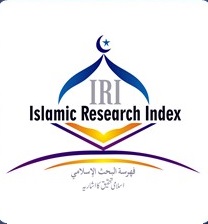India’s Untouchables Still Awaiting Equality
DOI:
https://doi.org/10.58932/MULF0016Abstract
This article considers the history and current situation of the Dalits of India, also known as the Untouchables. A range of primary source material is consulted, including Hindu sacred scripture that defines the caste system, writings by Indian leaders who advocated on behalf of social equality, constitutional documentation, and census data. This research shows that, although there has been much progress towards breaking down India’s caste system and achieving a greater degree of social equality, much remains to be done. This is especially the case in India’s rural regions where caste distinctions endure. The article also considers caste among the Hindus of Bali, showing that Indonesia’s Hindus are free of the worst kinds of caste discrimination that remain a problem in India.
References
Adhav, N. C. (2021). “Positions of Dalits in Indian Societies.” Ilkogretim Online - Elementary Education Online, 20(1), 4453-4461.
Ambedkar, B. (1979). Writings and Speeches (Vol. 1). (V. Moon, Ed.) New Delhi: Dr. Ambedkar Foundation.
Aswani, T. (2022). Indian Dalits leave Hinduism in droves in blow to ruling BJP. Nikkei Asia.
Babu, D. S. (2016). Caste and Class among the Dalits. In A. S. Rawat, & K. Satyanarayana (Eds.), Dalit Studies. Durham and London: Duke University Press.
Balasubramanian, D. (2013). Caste system: an indigenous invention in South India? The Hindu.com.
Bhaduri, A. (2013). National Campaign on Dalit Human Rights. Ncdhr.org.in.
Bharathiraja, S. (2010). “A study of social injustice in Omprakash Valmiki’s Joothan and K.A. Gunasekaran’s The Scarr”. Voice International, 132-7.
Bharathiraja, S. (2012). A Study of Social Realism in the Select Indian Dalit Autobiographies. Chidambaram, India: PhD Thesis, Annamalai University.
Bhawnani, G. A. (2018). “Does India Need A Caste-Based Quota in Cricket?”
Biswas, S. (2020). “Hathras case: Dalit women are among the most oppressed in the world”. BBC News.
Bose, S. C., & Ayer, S. (1964). Selected Speeches of Subhas Chandra Bose. New Delhi: Ministry of Information & Broadcasting.
Brueck, L. (2016). “Questions of Representation in Dalit Critical Discourse: Premchand and Dalit Feminism.” In A. S. Rawat, & K. Satyanarayana (Eds.), Dalit Studies. Durham and London: Duke University Press.
Center for Human Rights and Global Justice. (2007). Caste Discrimination against Dalits or So-Called Untouchables in India. Human Rights Watch.
Deshpande, S. (2008). Dalits in the Muslim and Christian Communities. New Delhi: National Commission for Minorities.
Gandhi, M. (1951). Selected writings of Mahatma Gandhi. London: Faber and Faber.
Gandhi, M. (1996). The Essence of Hinduism. (V. Kher, Ed.) Ahmedabad: Navajivan Publishing House.
Government of India. (n.d.). Constitution of India 1950.
Government of India. (1989). India: Act No. 33 of 1989, Scheduled Castes and the Scheduled Tribes (Prevention of Atrocities) Act, 1989.
Government of the United Kingdom. (1935). Government of India Act 1935.
Japhet, S., & Moses, Y. (2013). “The Unending Struggle of Dalit Christians and Dalit Muslims for Equality.” alice.ces.uc.pt.
Jones, C., & Ryan, J. (2007). Encyclopedia of Hinduism. New York: Facts on File.
Klostermaier, K. K. (1998). A Concise Encyclopedia of Hinduism. Oxford: OneWorld.
Lansing, J. (2012). Perfect order: recognizing complexity in Bali. Princeton, N.J.: Princeton University Press.
McManus, J. (2009). “Is caste prejudice still an issue?” BBC News.
Narayanan, V. (2007). The Hindu Tradition. In W. G. Oxtoby, & A. F. Segal (Eds.), A Concise Introduction to World Religions. New York: Oxford University Press.
Narula, S. (1999). Broken People: Caste Violence against India’s Untouchables. Human Rights Watch.
National Campaign on Dalit Human Rights. (2014). Overview of Dalit Human Rights Situation. Ncdhr.org.in.
OHCHR. (2021). “The Dalit: Born into a life of discrimination and stigma.” Office of the High Commissioner for Human Rights.
Pringle, R. (2004). A short history of Bali: Indonesia's Hindu realm. Crow’s Nest, NSW: Allen & Unwin.
Sargeant, W. (2009). The Bhagavad Gita. New York: State University of New York Press.
Sihombing, L. H. (2022). The Significance of the Caste System of Balinese in the Modern Era: A Discourse of Cultural Communication. Komunitas: International Journal of Indonesian Society and Culture, 14 (2), 146-156.
Sivakumar, B. (2013). “Half of India’s Dalit population lives in 4 states.” The Times of India.
Srinivasulu, K. (2002). Caste, Class and Social Articulation in Andhra Pradesh: Mapping Differential Regional Trajectories. London: Overseas Development Institute.
Statista Research Department. (2016). “Literacy rates among scheduled caste population India 1961-2011”.
Sundararaj, A. (2007). “Bali – Where the great stories of Hindu Mythology and Reality Meet.”
Sutradhar, R. (2014). Dalit Movement in India: In the light of four Dalit literatures. IOSR Journal of Dental and Medical Sciences, 13(4), 91-97.
Vivekananda, S. (n.d.). The Complete Works of Swami Vivekananda (Vol. 1). Calcutta: Advaita Ashrama.
Vivekananda, S. (1946). Selection from Swami Vivekananda. Mayavati: Advaita Ashrama.
Downloads
Published
How to Cite
Issue
Section
License
Copyright (c) 2023 South Asian Journal of Religion and Philosophy (SAJRP)

This work is licensed under a Creative Commons Attribution-NonCommercial 4.0 International License.









